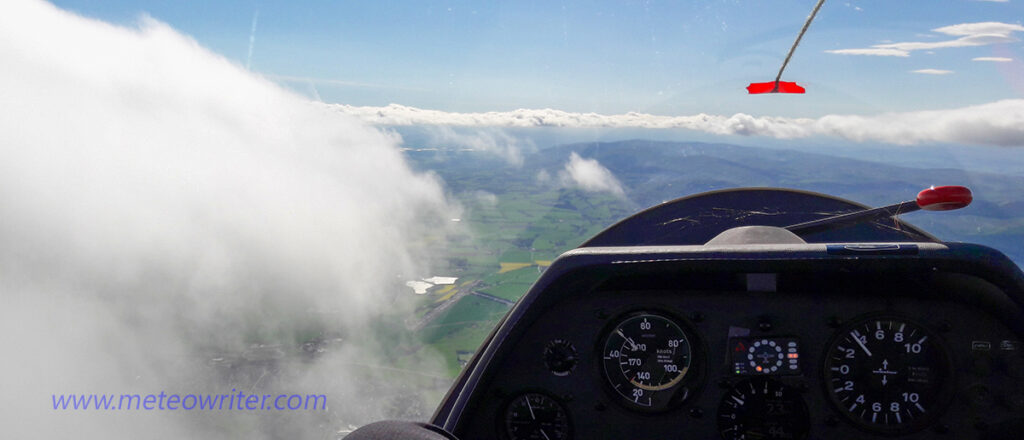From tidal bores to atmospheric waves
I’ve long had a fascination with waves and moving to a place near the sea has only strengthened that interest. From the gentle ripples of a calm summer’s evening to the huge breakers in a storm, every visit is different and invigorating in its own way.
However, my first interest was scientific as I found the theory both elegant and challenging. At university, one of the lecturers had even figured out how to mathematically describe the curve on the inside of a breaking wave, the holy grail called the ‘barrel’ that surfers aspire to ride through. How cool was that?
Years later that led to an interest in tidal bores such as the Severn Bore and I’ve now seen many of the twenty or more that occur in the UK (and even wrote a book about them called Tidal Bores of England, Scotland and Wales – follow this link if you’d like to find out more). I still find it incredible that the tides can cause a surge of water to flow miles inland, strong enough to surf on in the best conditions.
Waves also occur in the atmosphere and perhaps my most memorable encounter so far was on a mini course at at the Scottish Gliding Centre’s airfield at Portmoak. This was in mountain wave, which sometimes occurs when a strong wind blows across a ridge or mountain range, forming distinctive lines of lens shaped clouds. Shaped a bit like a spaceship and known as lenticular clouds, these have sometimes been mistaken for UFOs.
The airfield lies near the foot of the long smooth-sided ridge of Bishop Hill, on the shores of beautiful Loch Leven. Following a safety briefing, my instructor for the afternoon – a veteran of thousands of flights – made sure I was safely strapped into the glider before getting in himself. After securing the canopy and checking the controls, it was time to call ‘Take Up Slack’, following which the winch operator – just visible in the far distance – wound in the loose cable, ready for the launch.
With a call of ‘All Out’ we were then off, the urgent pull of the cable accelerating us faster than most sports cars up to flying speed. I’d experienced the crazy angle of climb before but even so this still took my breath away and before long we were levelling off, flying under our own control as the cable dropped back to the ground, more than a thousand feet below.
Heading straight for ‘The Bishop’, as it’s called locally, we soon encountered lift and flying back and forth gradually gained height in the mildly bumpy air, the instructor initially tucking in tight to the hill for the strongest lift. Before long we reached three thousand feet with fabulous views of Loch Leven and the surrounding hills and towns.
All too soon it was time to descend and before long we were on final approach to the airfield, with a slight buffeting as the airbrakes shed lift to steepen the descent. I could only admire the instructor’s smooth landing following which it was time to push the glider back to the launch point and then go for a well-earned cake and coffee.
For the second flight of the day, as there was a hint of wave around we took an aerotow to try to find it, the instructor expertly following a brighly coloured microlight in the bumpy air. Releasing at three thousand feet, we descended gently out over the loch toward a likely looking cloud and – bingo – started climbing again in the silky smooth air characteristic of wave lift.
Now doing some of the flying myself, under the instructor’s guidance we gradually coaxed the glider higher and higher until at more than five thousand feet we were above the cloud. Flying back and forth, the view was astonishing, at times flying through corridors of cloud with views toward Stirling, the Firth of Forth and more distant hills and mountains. What an experience!
So that was mountain wave experienced at first hand. If you fancy trying gliding yourself, most clubs offer trial flights which are a fabulous experience in any conditions. Wave flights are less common though and I was lucky with the choice of site, day and instructor to experience it on a first visit.
However, most keen pilots do eventually get the chance and the most experienced reach remarkable heights and distances, with the British distance record exceeding a thousand kilometres in a single flight. I say more about mountain waves and clouds in ‘Spectacular Britain‘.

